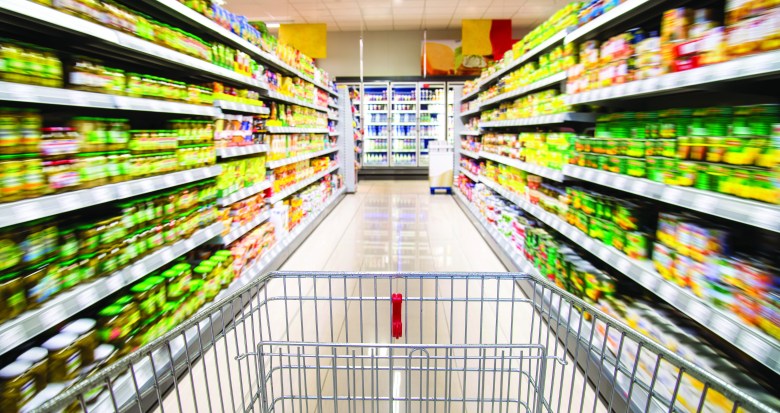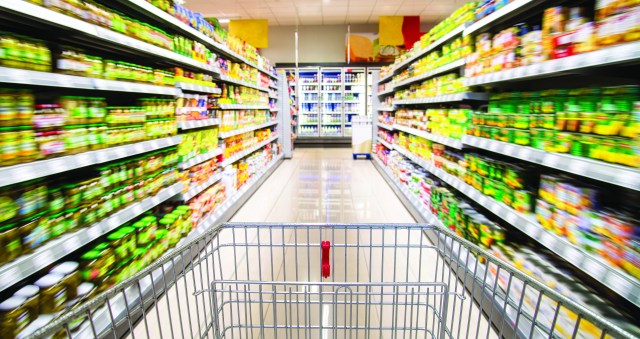
A range of new digital presses built for the label industry – from developers such as Epson, Konica Minolta and Screen – open new vistas for label printers that conventional flexo solutions cannot cater to.
In fact, following the digital route into label printing has placed some traditional commercial printers in the game – Southern Impact in Melbourne has even spun off a separate business, Onpack, to produce digital labels. These are companies that would not have invested in flexo because of considerable set-up costs.
Craig Heckenberg, general manager for Epson Australia, sees food and beverage, alcoholic beverages, household products, and industrial and pharmaceutical, as the main areas of demand for digitally printed labels.
“Services they are looking for include fast turnaround and ability to purchase just enough labels to fulfil their short-run orders. They avoid ordering and holding too much label stock as they don’t want to be caught with redundant labels, for example, to accommodate raw-ingredient or legislation changes.”
Is the increasing complexity of products, with multiple versions, and smaller boutique brands, creating demand for shorter variably printed runs of labels? “Absolutely,” says Heckenberg. “It is very common now to print multiple versions of a label for the one type of product. An example would be cut and prepared, ready-to-eat fruit that uses the same label design and is applied to a common container but varies the image and text using VDP to match the contents.”
Epson’s entry-level SurePress L-4533AW production press uses aqueous resin inkjet technology, representing an affordable and very versatile solution for short-runs and smaller print volumes, says Heckenberg. “Aqueous resin inks can print on a wide variety of substrates without pre-coating. The aqueous pigments are resin coated and are cured by a dual drying system that makes them durable and water-fast on both synthetic and paper materials. They are also very well suited to textured papers as inkjet printing is a non-contact technology which maintains texture fidelity.”
The SurePress L-4533AW can achieve up to 91 per cent of the Pantone range using a wide CMYK + orange & green colour gamut, and the addition of white ink allows printing onto clear, metallic and coloured material, he notes. Additionally, it has a variable web width from 80mm to 333mm, so that material costs can be saved by not being forced to print onto set-width material all the time.
“The SurePress L-4533AW is very easy to operate and, once a job is set up, operators can attend to other tasks whilst it is printing. The L-4533AW is the fourth generation of the successful SurePress platform with over 300 installations worldwide and has proven to be a reliable, versatile, short-run label production press.”
So how does Heckenberg see the future of Australian label printing? “Industry surveys suggest digital label printing and investment into digital label presses will continue to grow. This year FINAT [the European association for the self-adhesive label industry] reported digital label press purchases overtook conventional label press purchases in Europe for the first time and we believe this trend will follow in Australia and New Zealand,” he says.
At Konica Minolta, Mark Brown, product marketing manager for Industrial Print, notes there is a broad range of industries serviced with digitally printed labels – such as foodstuffs, beverage (alcoholic and non-alcoholic), health and beauty and industrial.
Specialty and boutique brands are a growing component, as is VDP-driven label production, but says Brown, it depends on the industry segment, the application and most importantly the marketing campaign, which is often the driver for the variable content. Variable data can also be driven by product batch requirements.
“The best advice before entering the market is to try before you buy,” says Brown. “Outsource labels to a trusted printer where you can qualify the quality and repeatability and develop suitable volume.
“Once you believe you have enough volume, you can then bring the production inhouse. In terms of the technology the device uses – such as toner or inkjet – you should print test jobs on each of the desired devices and test the output with your clients. From there, it’s a comparison of suitability for applications and materials and ROI which will determine the best investment to make.”
Konica Minolta’s AccurioLabel 190 is a high-quality, easy-to-use label press with a very small footprint, states Brown. It prints up to 18.9m/min on a web 330mm wide at 1200dpi. Since its release last year, Konica Minolta has sold over 250 units globally, he reports, “a testament to it being fit for purpose and good value for money”.
Looking to the future, Brown says, “Australia is well known for early technology adoption and the printing of labels via digital methods is no different. Konica Minolta expects the level of digitisation of the label market will continue at an accelerated rate over the coming years, as presses become faster, better and cheaper. In addition, we expect to see the start of digital label embellishment in the Australian market.”
Currie Group notes that changes in consumer behaviour and market trends are prompting brands to adapt and evolve, constantly looking for ways to save money, speed time to market and engage more closely with consumers. For labels and packaging converters, this translates into a landmark shift from traditional long runs to short runs and also to new long runs, consisting of multiple SKUs, brand protection features and VDP.
With this in mind, HP Indigo has upgraded its WS6800 narrow-web label press to the 6900 digital press, which offers innovative solutions allowing converters to produce any narrow-format label, flexible packaging, sleeve, IML, wraparound labels or folding cartons job, with easy and quick changeovers. In fact, the HP Indigo 6000 series enables printing of any label, at any run-length, in a simpler, more productive and profitable way.
The HP Indigo 6900 facilitates almost any packaging application, including labels, flexible packaging, and shrink sleeves on any film or paper. The press supports the widest range of media in digital production, including synthetic and paper substrates from 10 to 450 microns. It can print on either pre-optimised substrates or standard off-the-shelf materials, using inline or offline priming solutions. Many eco-certified substrates as well as environmentally friendly primers, varnishes, and adhesives are supported.
Mark Daws, Director – Labels and Packaging ANZ at Currie Group, finds FMCG (fast-moving consumer goods) to be “the strongest market for narrow-web digital, followed by healthcare and pharmaceuticals, wine and beverage”.
“As millennials quickly move front-and-centre into becoming the largest consumer demographic, label technologies need to find new ways to enhance packaging to appeal to this market segment, says Daws. The need to frequently refresh content and launch new SKUs to market makes digital the ideal narrow-web platform,” he says.
Referring to research that shows consumers are exposed to an average of 50,000 SKUs in a typical grocery store and this number continues to increase, Daws says shoppers have learnt to cope with this upswing and to seek out smart, relevant packaging that also has attractive shelf appeal.
In attracting millennials, Daws also sees sustainability playing a significant role in decision making. With new brands coming to market, the need to produce small test-runs and to scale accordingly, based on product shift, is a growing consideration. Digital printing can help to drive just-in-time print runs as required, he argues.
Daws notes the average run length of jobs continues to decline – in New Zealand, for example, it is down to 1,500 metres – and digital narrow-web is becoming the technology of choice. He sees a role still for conventional printing presses but digital is the technology that allows new label ideas to be driven to customers at just the right opportunities. He says HP Indigo presses have already played an important role in bringing flexible packaging in, as the next industry to embrace digital printing.
Peter Scott, managing director of Screen GP Australia, describes the Screen Truepress Jet L350UV, as the optimal choice for printers looking to expand into digital production of labels. He points to the recent FINAT study, which indicated that 48 per cent of printers surveyed would be investing in inkjet digital label production as their next purchase. He observes that some ten years ago, that figure would have been close to zero.
With its 350mm web width, 60 linear metres per minute, wide-gamut colour with white ink, chill roller option for thin heat-sensitive substrates and the recent addition of low-migration inks for food packaging, the L350 was the natural choice for the European Digital Press Association Award during last year’s FESPA, notes Scott.
He reports the dealer association with Jet Technologies and Fujifilm NZ progressing very successfully. “Jet knows the label market inside-out and proved a successful reseller of Screen Flexo CTP devices and now the L350 series. Fujifilm NZ is a very strong graphic arts channel across the Tasman and we have a long association with them.”
Scott sees not only short-run label jobs but also some segments of volume flexo/offset/gravure production being challenged by digital narrow-web printing. “The food and beverage, packaged goods, cosmetics and pharma sectors are prime clients for digitally printed and finished labels.”
Micro-breweries, boutique coffees and home businesses, as well as major brand houses, can benefit from digitally printed labels, particularly complex, highly versioned or VDP labels, he explains.
“Alongside wide-format signage, POP and display, digital narrow-web is the most exciting segment of the printing industry into the foreseeable future,” says Scott. “For printers, digital label production is a low-risk, high-yield investment.”
EFI has a long history in the label and packaging industry. With the proliferation of digital among the conventional analogue label converting space EFI says its software has been important in providing the types of streamlined, automated workflows that make it possible to produce short-run digital jobs with minimal touch points.
EFI says converters depend on its Packaging Suite, including Radius ERP software, for efficiency gains. It says Radius ERP helps many of the world’s leading label producers expand their digital operations and drive greater profitability from shorter run work.
Xeikon continues to offer its 3000 series, in which its Cheetah CX-3, a 330mm-web width, 30m/min toner machine, is prominent. The Cheetah features single-pass opaque white, food-safe toners, 1200x3600dpi resolution, and full rotary printing. Xeikon’s ANZ sales manager Trevor Crowley notes these are fundamental in establishing the role of digital label presses alongside high-volume flexography in the label printing market.
Comment below to have your say on this story.
If you have a news story or tip-off, get in touch at editorial@sprinter.com.au.
Sign up to the Sprinter newsletter

